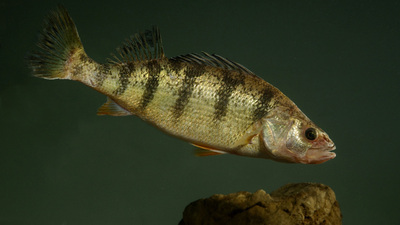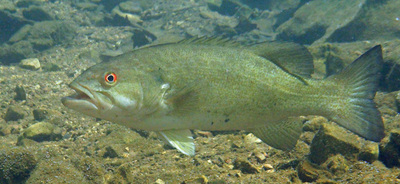Muskellunge, typically referred to as “muskie,” are stocked in 10 reservoirs in Ohio as well as various other lakes. Nine of these are stocked by the Ohio Division of Wildlife, and one (Pymatuning Lake) is stocked by the Pennsylvania Fish and Boat Commission. Ohio stocks approximately 20,000 8- to 12-inch muskies each fall in the nine program reservoirs to maintain these fisheries.
Muskie are native to Ohio and naturally reproduce in a limited number of streams and rivers in Ohio. GoFishOhio.com reports Knox Lake is stocked with muskellunge.
The state record for largest muskellunge was captured on April 12, 1972, by Joe D. Lykins. The fish weighed 55.13 pounds, measured 50 1/4 inches and was caught in Piedmont Lake.
Tips
No.1 tip: Have an experienced muskie fisherman take you fishing, or attend a local muskie club meeting and shorten your learning curve.
Visit the muskie information section of the Ohio Department of Natural Resources website (ohiodnr.gov) for detailed information on Ohio’s muskie program and nine program lakes.
Mid-May until mid-July is the best period to be on any of Ohio’s muskie lakes.
Quality needlenose pliers and mini-boltcutters are a must-have in a muskie boat. Big hooks and muskie teeth can both cause nasty angler injuries. The bolt cutters can be used to free a muskie from a landing net when hooks tangle.
Tackle
Heavy casting rods from 6.6 to 8 feet in length matched with wide-spool casting reels with line-out alarms are recommended equipment. A separate rod for trolling purposes is a plus and should have slightly more flex than the casting rod and be equipped with a line counter reel for determining accurate trolling depths. New “super-lines” in 60- to 90-pound test make great multi-purpose lines for casting and trolling but require modern muskie rods with more length and flex since these lines have low stretch characteristics. A short 10-inch wire leader is recommended for casting and longer 12- to 24-inch leader for trolling to protect your line from zebra mussels and muskie teeth. Typical lures include large crankbaits, jerkbaits, bucktails, plastic swimbaits, buzzbaits and “walk-the-dog” style topwater baits. These specialized lures generally range in size from 4 to 12 inches long.
Where to fish
In addition to the Knox River, the following are noted muskellunge fishing locations: Central Ohio: Alum Creek Lake; Northwest Ohio:
Clear Fork Reservoir; Northeast Ohio: Pymatuning Lake, West Branch Reservoir, Lake Milton, Leesville Lake; Southwest Ohio: Caesar Creek Lake, East Fork Lake; Southeast Ohio: Piedmont Lake, Salt Fork Reservoir.
Fishing conditions
From mid-June to mid-September, the ODNR reports good to fair conditions for muskellunge. In addition, ODNR specialists advise the following:
Spend more time trolling open water with crankbaits just above the thermocline level.
Be sure to use line counter reels for accurate trolling depths and talk to local muskie fishermen and fish biologist for information on how deep to fish.
Muskies can still be caught casting off the ends of deep bars, humps and standing timber with lures that will retrieve in the 6- to 10-feet-deep range.
By now, a muskie's main food source, gizzard shad, have moved out into the open lake. Muskies will still use the ends of main lake bars if they are above the thermocline, but many will suspend off the ends of these bars or out over the open water.
If standing timber is available in deep water, muskies will suspend in it. Concentrate on the lower 1/3 of the lake near the dam in most cases, but cold water from summer storms can sometimes move fish into the backs of coves and into flooded feeder stream areas.







